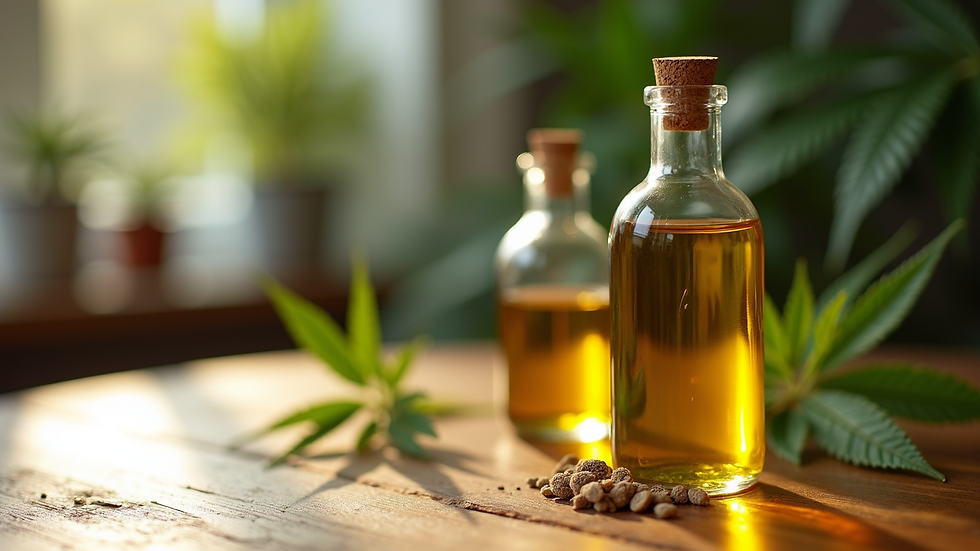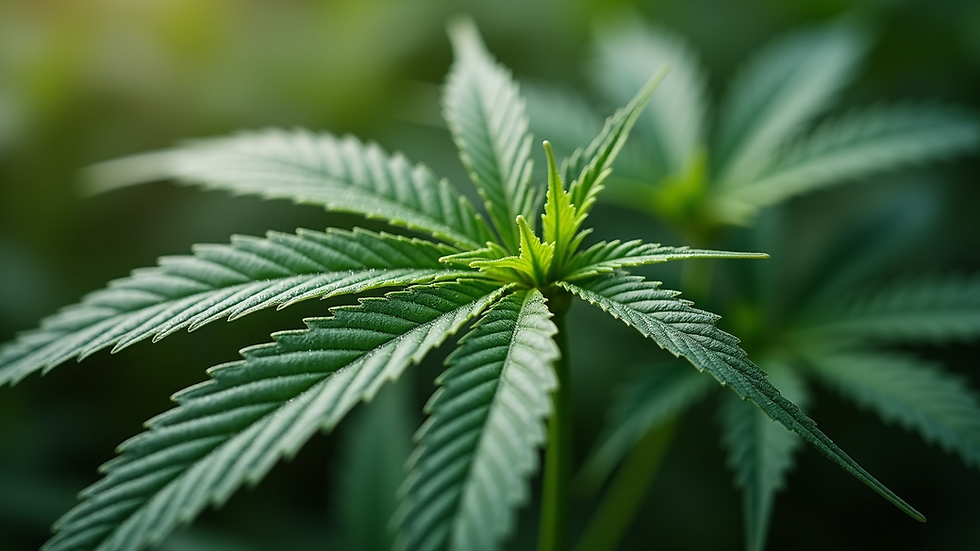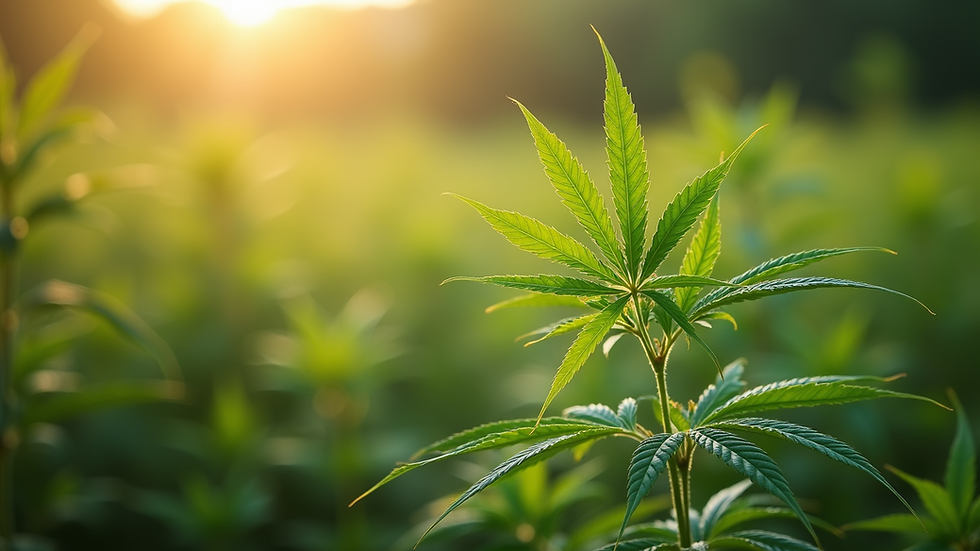Understanding How Hemp-Derived Products Are Made
- Andrew Mann
- Sep 16, 2025
- 4 min read
Hemp products have gained significant popularity in recent years due to their versatility and potential health benefits. From textiles to wellness supplements, hemp is a sustainable resource with many uses. But how exactly are these products made? This article will take you through the key steps involved in producing hemp products, explaining the processes in simple terms and providing practical insights.
The Basics of Hemp Cultivation
Before hemp products can be made, the hemp plant itself must be grown. Hemp is a variety of the Cannabis sativa plant species, but it contains very low levels of THC, the psychoactive compound found in marijuana. Farmers cultivate hemp primarily for its fibers, seeds, and cannabinoids.
Soil and Climate: Hemp thrives in well-drained soil with a pH between 6 and 7.5. It prefers moderate climates with plenty of sunlight.
Planting: Seeds are typically planted in spring when the soil temperature reaches about 50°F (10°C).
Growth Cycle: Hemp grows quickly, reaching maturity in about 3 to 4 months. During this time, it requires minimal pesticides and herbicides, making it an eco-friendly crop.
Farmers monitor the plants closely to ensure they meet legal THC limits, which vary by region but generally must be below 0.3%.

Processing Hemp for Various Products
Once harvested, hemp undergoes different processing methods depending on the intended product. The main parts used are the stalk, seeds, and flowers.
Fiber Extraction
Hemp fibers are strong and durable, making them ideal for textiles, ropes, and paper.
Retting: This is the process of breaking down the stalk to separate the fibers. It can be done by:
Water retting - soaking stalks in water for several days.
Dew retting - leaving stalks on the ground to be broken down by moisture and microbes.
Decortication: After retting, machines crush the stalks to separate the outer fibers from the woody core.
Cleaning and Spinning: The fibers are cleaned, combed, and spun into yarn or thread for fabric production.
Seed Processing
Hemp seeds are nutritious and used in food products, oils, and supplements.
Cleaning: Seeds are cleaned to remove debris.
Cold Pressing: Seeds are pressed to extract hemp seed oil, which is rich in essential fatty acids.
Hulling: The outer shell of the seed is removed to produce hemp hearts, which are edible and highly nutritious.
Extracting Cannabinoids
The flowers and leaves of hemp contain cannabinoids like CBD, which are extracted for wellness products.
Harvesting: Flowers are harvested at peak cannabinoid levels.
Drying and Curing: Proper drying preserves cannabinoid content.
Extraction Methods: Common methods include:
- CO2 extraction - uses pressurized carbon dioxide to pull cannabinoids.
- Ethanol extraction - uses alcohol as a solvent.
- Oil infusion - cannabinoids are infused into carrier oils.
These extracts are then refined and formulated into oils, tinctures, edibles, and topicals.

Quality Control and Safety Standards
Ensuring the quality and safety of hemp products is crucial. Producers follow strict guidelines to meet regulatory standards.
Testing for THC Levels: Products must be tested to confirm THC content is within legal limits.
Contaminant Screening: Tests check for pesticides, heavy metals, and microbial contamination.
Potency Verification: Cannabinoid levels are verified to ensure accurate labeling.
Third-Party Lab Testing: Independent labs provide unbiased results to build consumer trust.
Consumers should look for products with certificates of analysis (COA) to verify quality.
The Role of Hemp-Based THC in Products
While hemp contains very low THC, some products include hemp-based thc derived legally from hemp plants. These products offer mild psychoactive effects and are regulated differently from marijuana.
Manufacturers carefully control the extraction and formulation to comply with laws while providing consumers with a unique experience. This segment of hemp products is growing as regulations evolve and consumer interest increases.

Sustainable Benefits of Hemp Products
Hemp is celebrated for its environmental advantages. Using hemp-based products supports sustainability in several ways:
Low Water Usage: Hemp requires less water than many traditional crops.
Soil Health: Hemp roots help prevent soil erosion and improve soil structure.
Carbon Sequestration: Hemp absorbs large amounts of CO2 during growth.
Biodegradable Materials: Hemp fibers and plastics break down naturally, reducing waste.
Choosing hemp products contributes to a greener lifestyle and supports eco-friendly industries.
How to Choose Quality Hemp Products
With many hemp products on the market, selecting the right ones can be overwhelming. Here are some tips:
Check for Transparency: Look for brands that provide detailed product information and lab results.
Understand the Source: Know where the hemp is grown and how it is processed.
Consider Your Needs: Different products serve different purposes - from nutrition to relaxation.
Start Small: If trying cannabinoid products, begin with a low dose to gauge effects.
Consult Professionals: Speak with healthcare providers if using hemp products for health reasons.
By making informed choices, you can enjoy the benefits of hemp safely and effectively.
Hemp products are crafted through a series of careful steps, from cultivation to processing and quality control. Understanding these processes helps consumers appreciate the value and potential of hemp as a versatile and sustainable resource. Whether you are interested in textiles, nutrition, or wellness, hemp offers a wide range of options worth exploring.



Comments